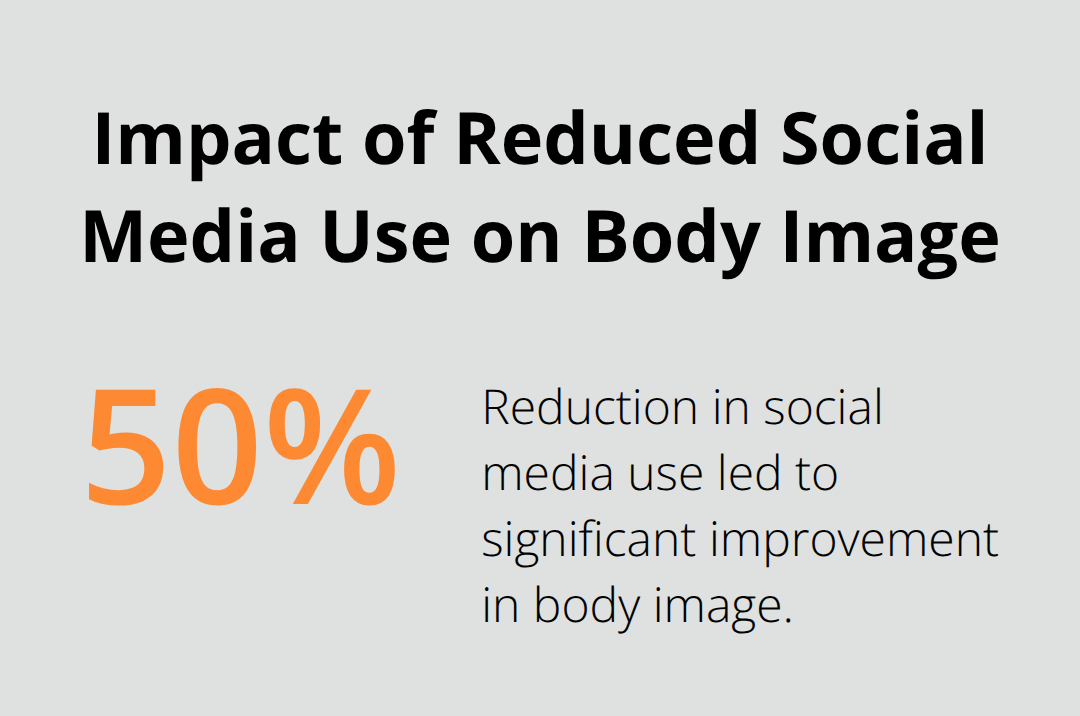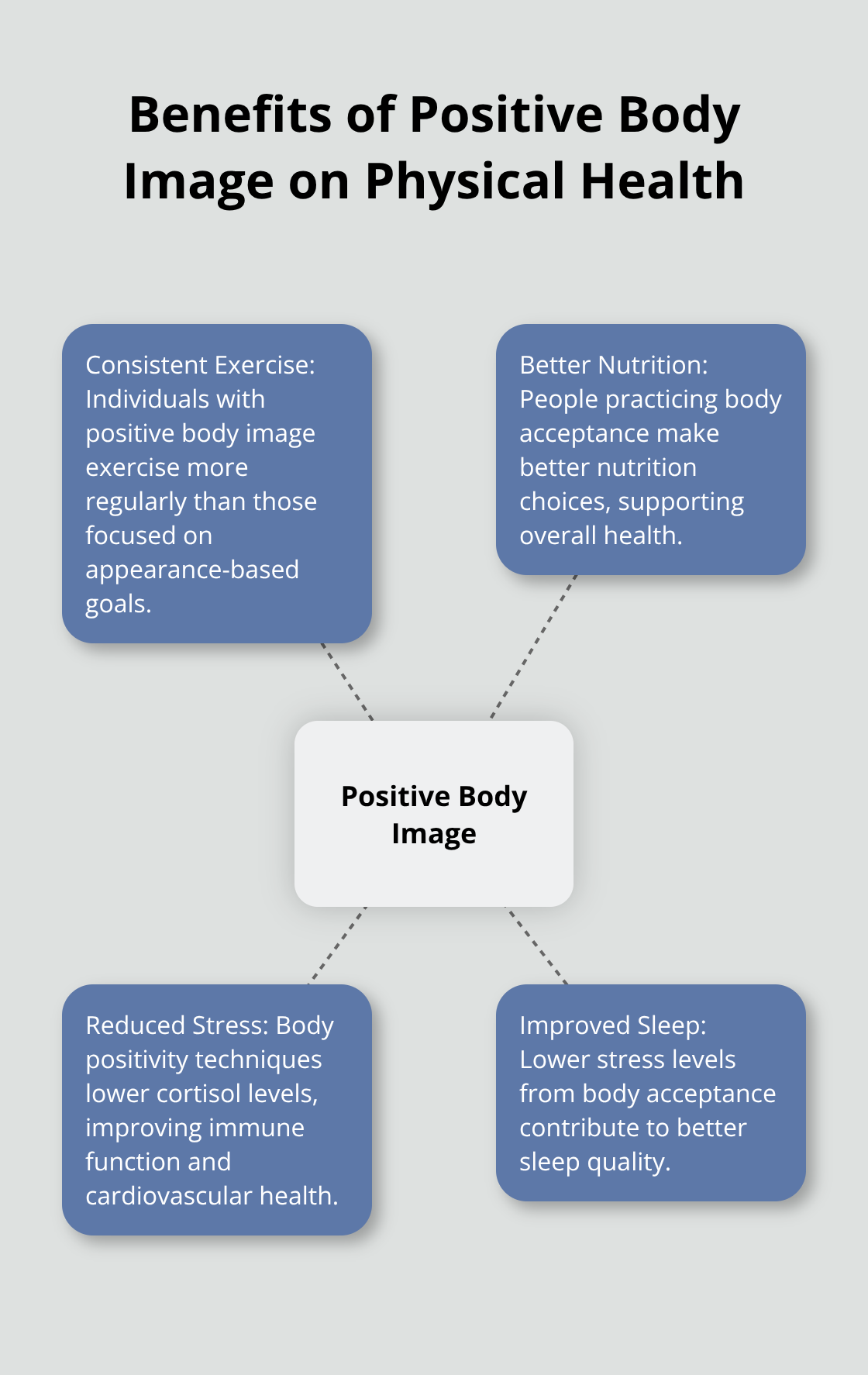Body image struggles affect millions of people worldwide, leading to decreased self-worth and mental health challenges. Understanding what body positivity means can transform how we view ourselves and others.
At Global Positive News Network, we believe this movement offers powerful tools for building healthier relationships with our bodies. The science shows clear benefits for both mental and physical wellbeing.
How Did Body Positivity Begin
The Movement’s Revolutionary Roots
Body positivity emerged from the fat acceptance movement of the late 1960s, when activists challenged weight-based discrimination head-on. The National Association to Advance Fat Acceptance, founded in 1969, sparked this revolution and demanded equal rights for people of all sizes. The Fat Underground released their manifesto in 1973, directly attacked the diet industry, and demanded societal change. Activists organized protests against fatphobic advertisements through the 1980s and 1990s, which built momentum that would transform into today’s movement.
Core Principles That Drive Change
Modern body positivity stands on three pillars: all bodies deserve respect regardless of size, shape, or appearance; beauty standards are social constructs that harm everyone; and self-worth exists independent of physical attributes. Research from the American Psychological Association shows that teens and young adults who reduced their social media use by 50% for just a few weeks saw significant improvement in how they felt about both their weight and overall body image, making these principles more vital than ever.

The movement challenges medical bias, fights appearance-based discrimination, and promotes health approaches that don’t center weight loss as the primary goal.
Facts Versus Common Myths
Body positivity doesn’t promote unhealthy behaviors or ignore medical concerns. Studies demonstrate that positive body image actually correlates with better health outcomes, which include reduced anxiety and depression rates. The movement faces criticism for corporate co-optation, but authentic body positivity remains focused on systemic change rather than individual self-improvement. Social media hashtags like #BodyPositivity now generate millions of posts, yet many visible advocates still face harassment (showing how much work remains in changing societal attitudes).
These foundational principles create the framework for understanding why body positivity matters so deeply for mental and physical health outcomes.
How Does Body Positivity Transform Your Health
Mental Wellness Shows Dramatic Improvements
Research demonstrates that body positivity creates measurable mental health benefits within weeks of practice. Studies investigating body image and self-esteem show correlations between body acceptance and improved psychological outcomes. The University of Vermont tracked 200 college students and discovered that those who engaged with body-positive content experienced significantly lower rates of depression compared to peers exposed to traditional beauty messages.
Body positivity rewires negative thought patterns through neuroplasticity. When you replace self-criticism with acceptance, brain scans show increased activity in regions associated with emotional regulation. Women who practiced daily body affirmations for 30 days reported less time spent on appearance-related worries, according to research from Arizona State University.
Disordered Eating Behaviors Decrease Significantly
The National Eating Disorders Association reports that body positivity interventions reduce disordered eating behaviors in high-risk populations. Students who participated in body acceptance programs showed fewer episodes of binge eating and less restrictive eating patterns over six months. The correlation is clear: when people stop viewing their bodies as problems to fix, destructive eating patterns naturally decrease.
Body positivity also prevents eating disorders from developing in the first place. Schools that implemented body-positive curricula saw fewer students develop eating disorder symptoms compared to control groups. The approach works because it addresses root causes rather than symptoms (creating lasting behavioral changes that protect long-term health).
Physical Health Outcomes Improve Across Multiple Areas
People who practice body acceptance engage in more consistent exercise routines and make better nutrition choices. Stanford University research found that individuals with positive body image exercise more regularly than those focused on appearance-based fitness goals. They also maintain these habits longer because intrinsic motivation proves more sustainable than external pressure.
Body positivity reduces chronic stress levels, which directly impacts physical health markers. Cortisol levels drop in people who practice body acceptance techniques for three months. Lower stress hormones improve immune function, sleep quality, and cardiovascular health (making body positivity a comprehensive wellness strategy).

These health transformations create the foundation for sustainable lifestyle changes that support both mental and physical wellbeing. The next step involves learning practical techniques to cultivate this positive relationship with your body.
How Can You Build Body Positivity Daily
Replace Internal Criticism With Actionable Compassion
The average person has 12,000 to 60,000 thoughts per day, and research shows that negative mindsets significantly impact disease progression and recovery. Your inner critic operates on autopilot, but you can reprogram this pattern through specific techniques that work within days. Write down three negative thoughts about your body each morning, then immediately rewrite each one as a neutral observation. Instead of saying your stomach looks terrible, write that your stomach exists and functions properly. This technique from cognitive behavioral therapy shows results in just two weeks of consistent practice.
Track your self-talk patterns with your phone’s voice memo app for one week. Most people discover they criticize their appearance every 20 minutes during waking hours. Once you identify your specific negative phrases, create replacement statements that focus on function rather than form. Clinical psychologist Dr. Kristin Neff’s research demonstrates that self-compassion practices reduce body shame by 40% within one month when applied consistently.
Create Your Environment for Success
Social media algorithms feed you content that reinforces appearance obsession, but you control your feeds completely. Unfollow accounts that make you feel worse about your body and replace them with diverse body representation. Instagram users who curated body-positive feeds reported 35% less appearance anxiety after just three weeks, according to research from Flinders University. Follow accounts that show bodies engaged in activities like hiking, cooking, or working rather than posing for appearance validation.
Your physical environment shapes body perception too. Remove bathroom scales, diet books, and magazines that promote weight loss from your living space. Replace mirrors positioned for body checking with mirrors placed at eye level for practical use. Studies show that behavioral interventions targeting sustained behavior change have shown promising results in creating more peaceful daily routines. Surround yourself with photos that capture moments of joy, achievement, and connection rather than appearance-focused images.
Shift Focus to Physical Capabilities and Achievements
Your body performs thousands of functions every day that have nothing to do with appearance. Start each morning by acknowledging three things your body accomplished the previous day, such as carrying groceries, hugging someone, or healing a small cut. Research from the University of British Columbia found that people who practiced daily gratitude for body function showed increased body satisfaction scores within four weeks.
Create physical challenges that celebrate capability rather than appearance changes. Sign up for a 5K walk, learn to garden, or take dance classes that emphasize movement joy over calorie burning. People who engage in function-focused activities report 60% higher body appreciation scores compared to those doing appearance-focused exercise (according to data from the Body Positive Fitness Alliance). Track improvements in strength, endurance, or skill development rather than weight or measurements to maintain motivation for lifelong healthy habits.

Final Thoughts
Body positivity transforms lives through measurable mental health improvements, reduced eating disorder risks, and better physical health outcomes. The research shows clear benefits: people who practice body acceptance experience lower depression rates, engage in more consistent exercise, and develop sustainable healthy habits that last for years. What is body positivity means recognizing that this movement goes far beyond social media posts or surface-level self-love.
The techniques we’ve explored work because they address root causes of body dissatisfaction rather than temporary fixes. When you replace self-criticism with compassion, curate positive environments, and focus on physical capabilities, you create change that impacts every area of your life. Your journey toward body acceptance starts with small daily actions that compound over time (the Stanford and University of Vermont studies prove that consistent practice produces results within weeks).
We at Global Positive News Network celebrate stories of personal transformation and community impact that inspire positive change. Body positivity represents one powerful path toward the optimistic outlook that transforms both individual lives and entire communities. This movement continues to evolve as more people discover its life-changing potential.




